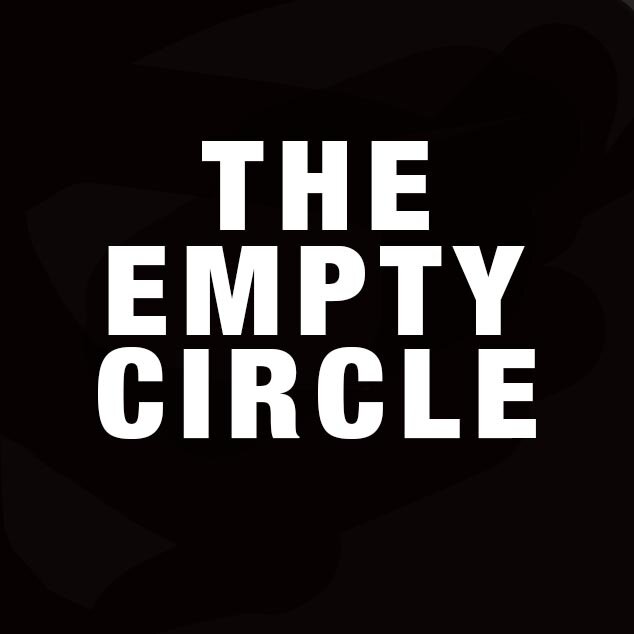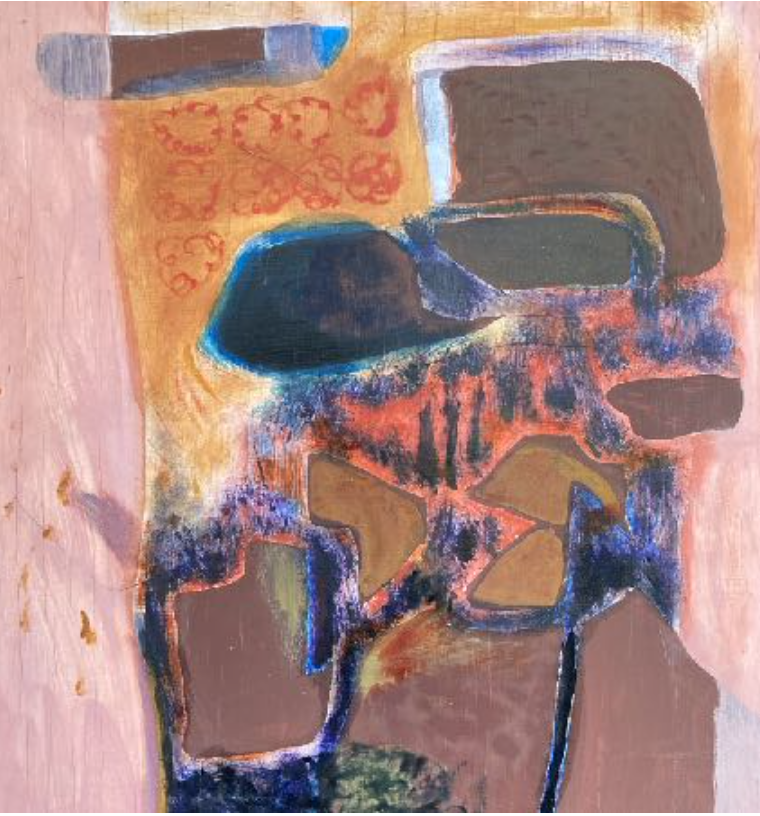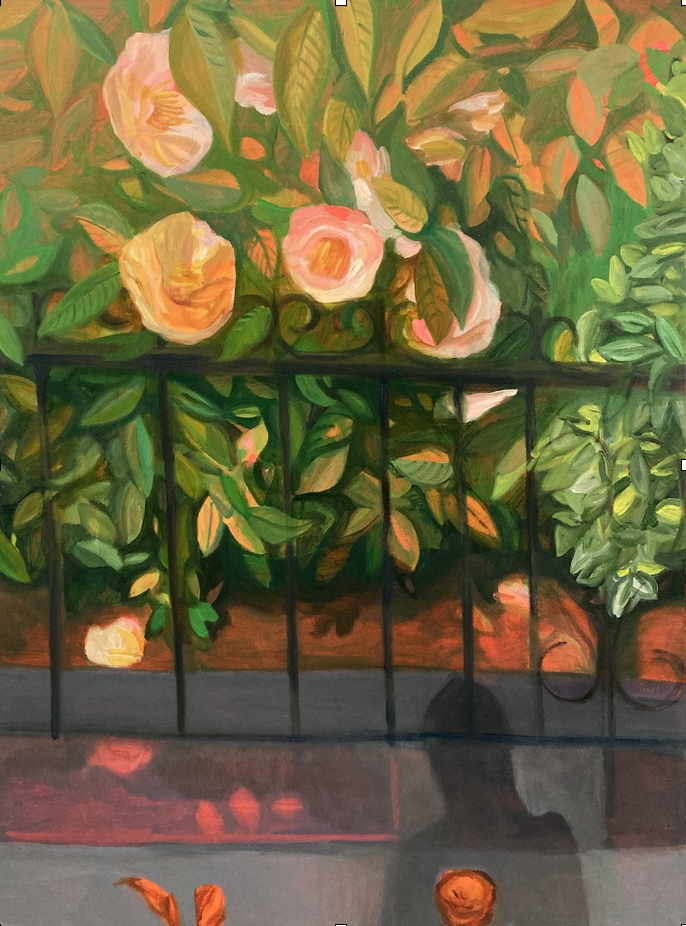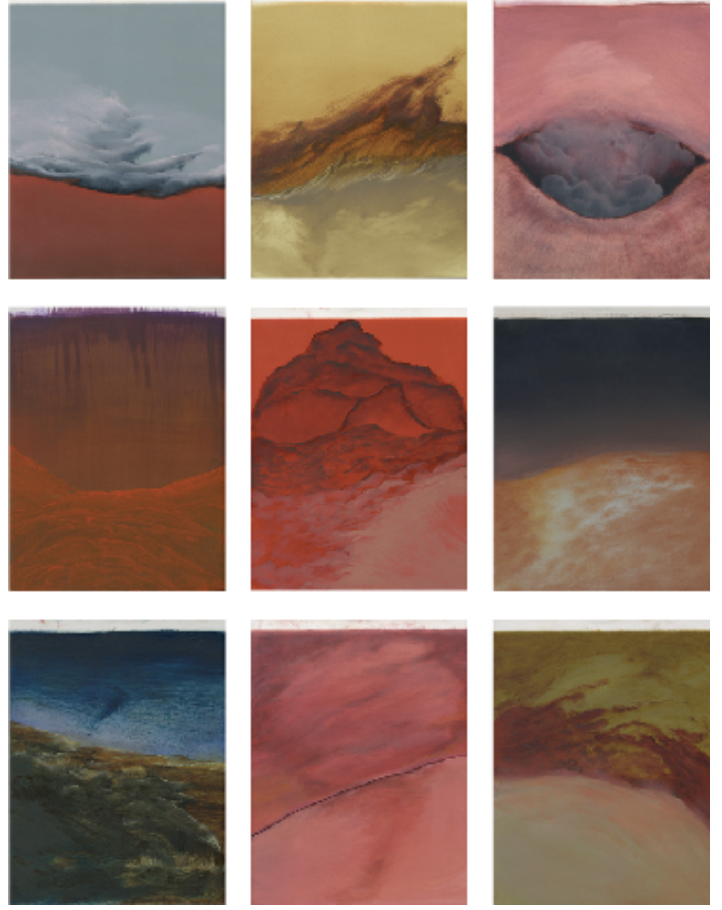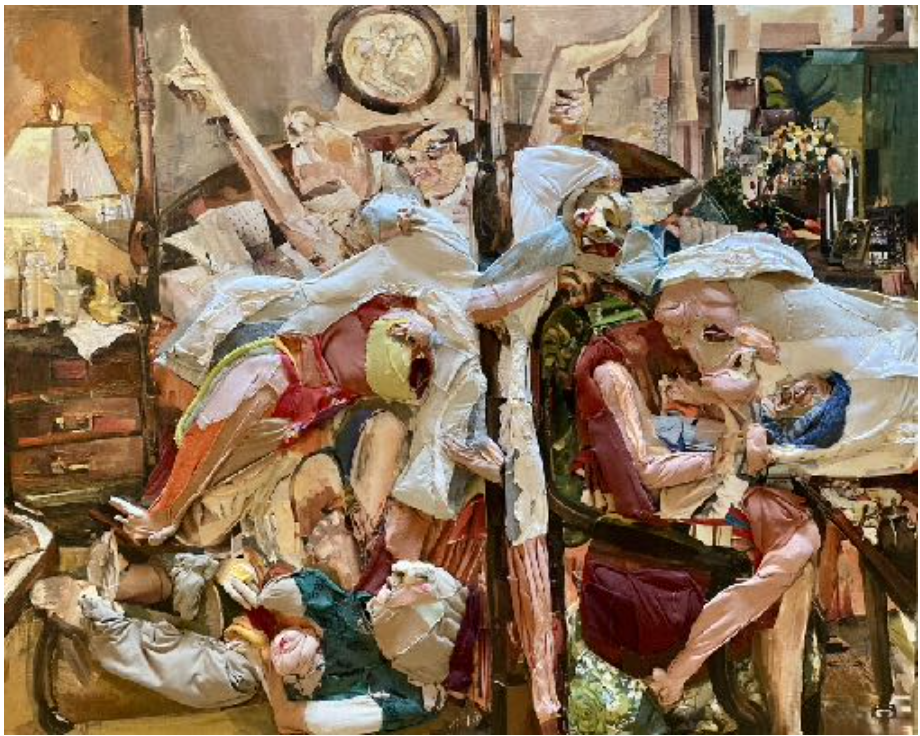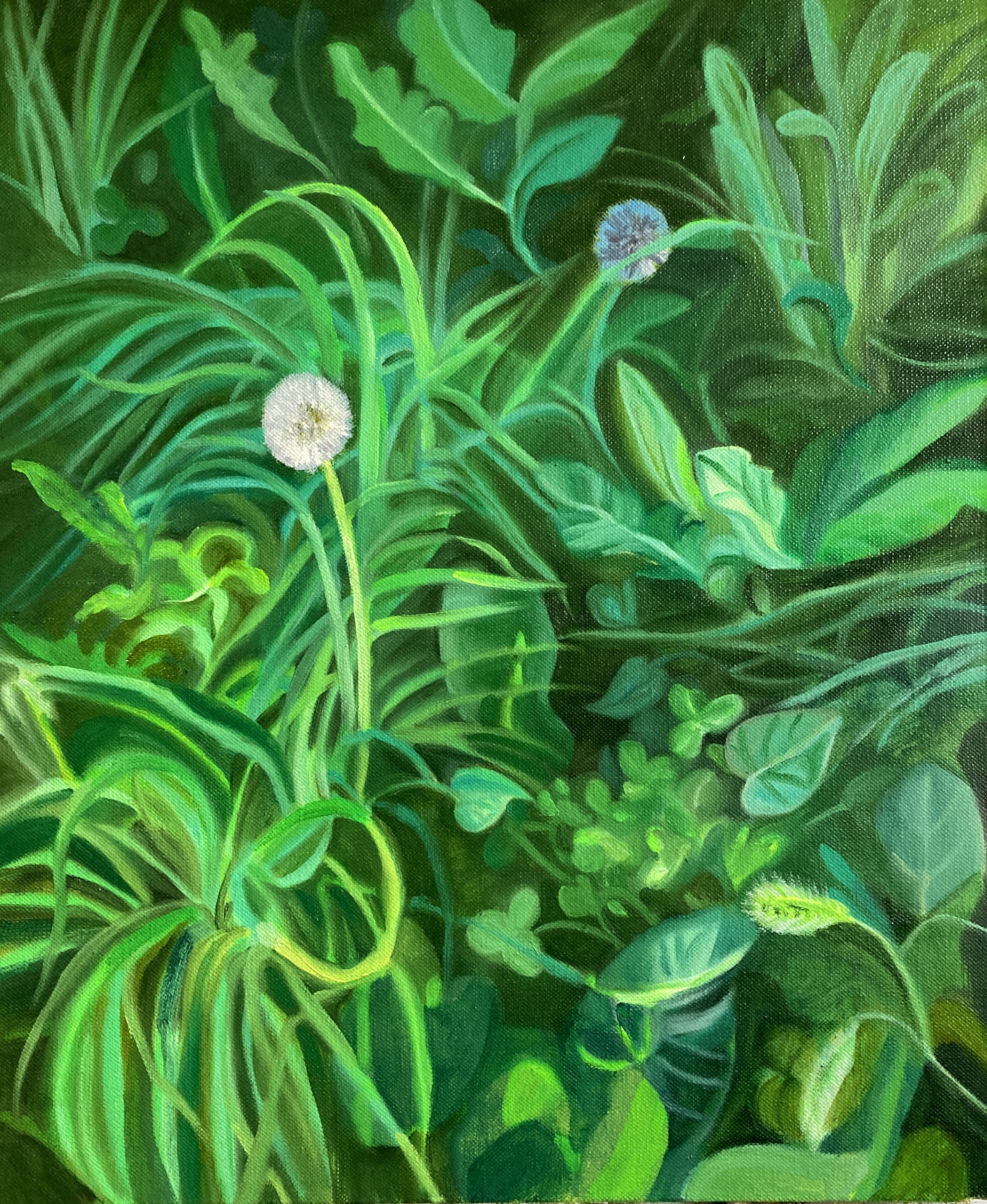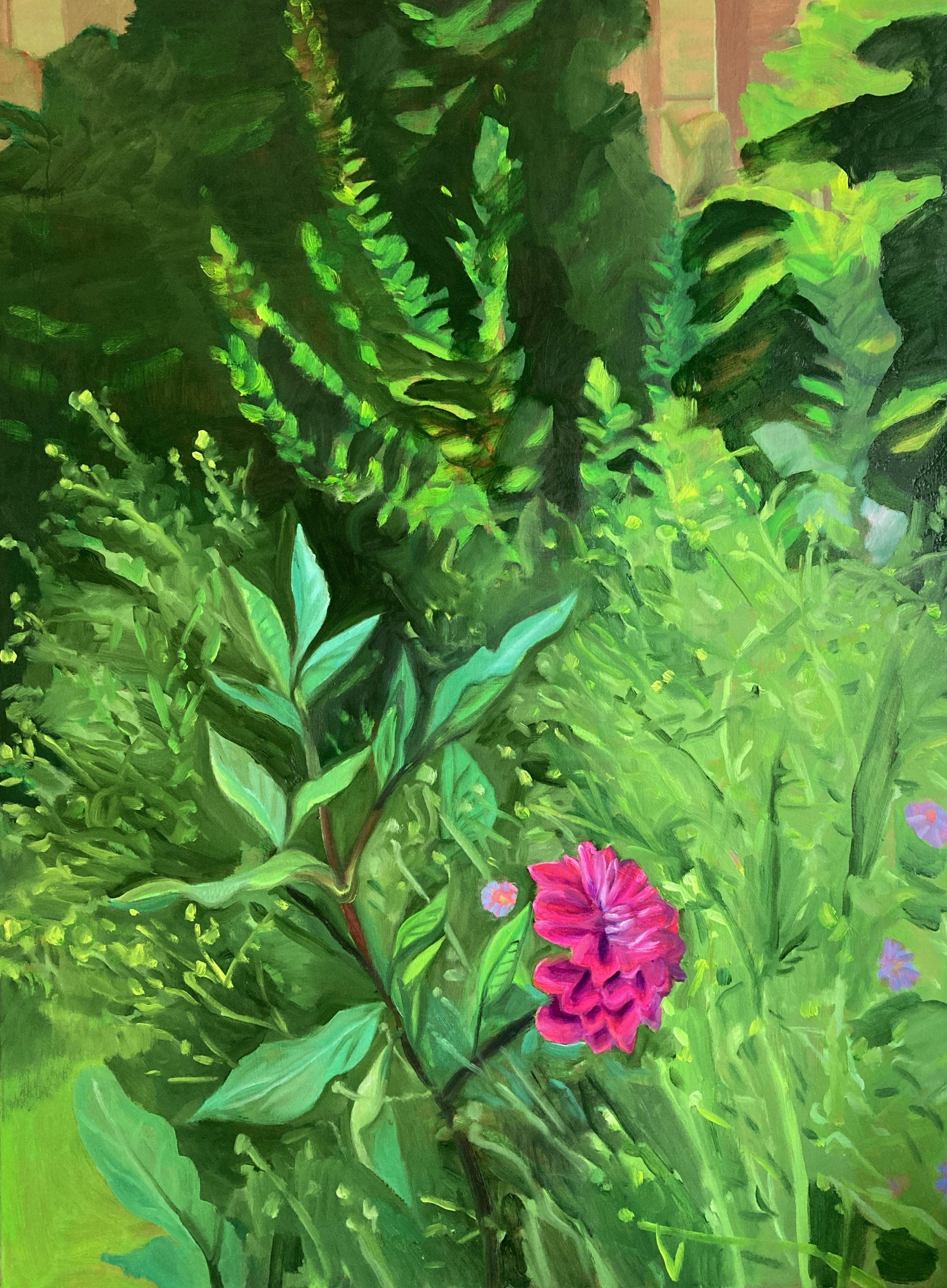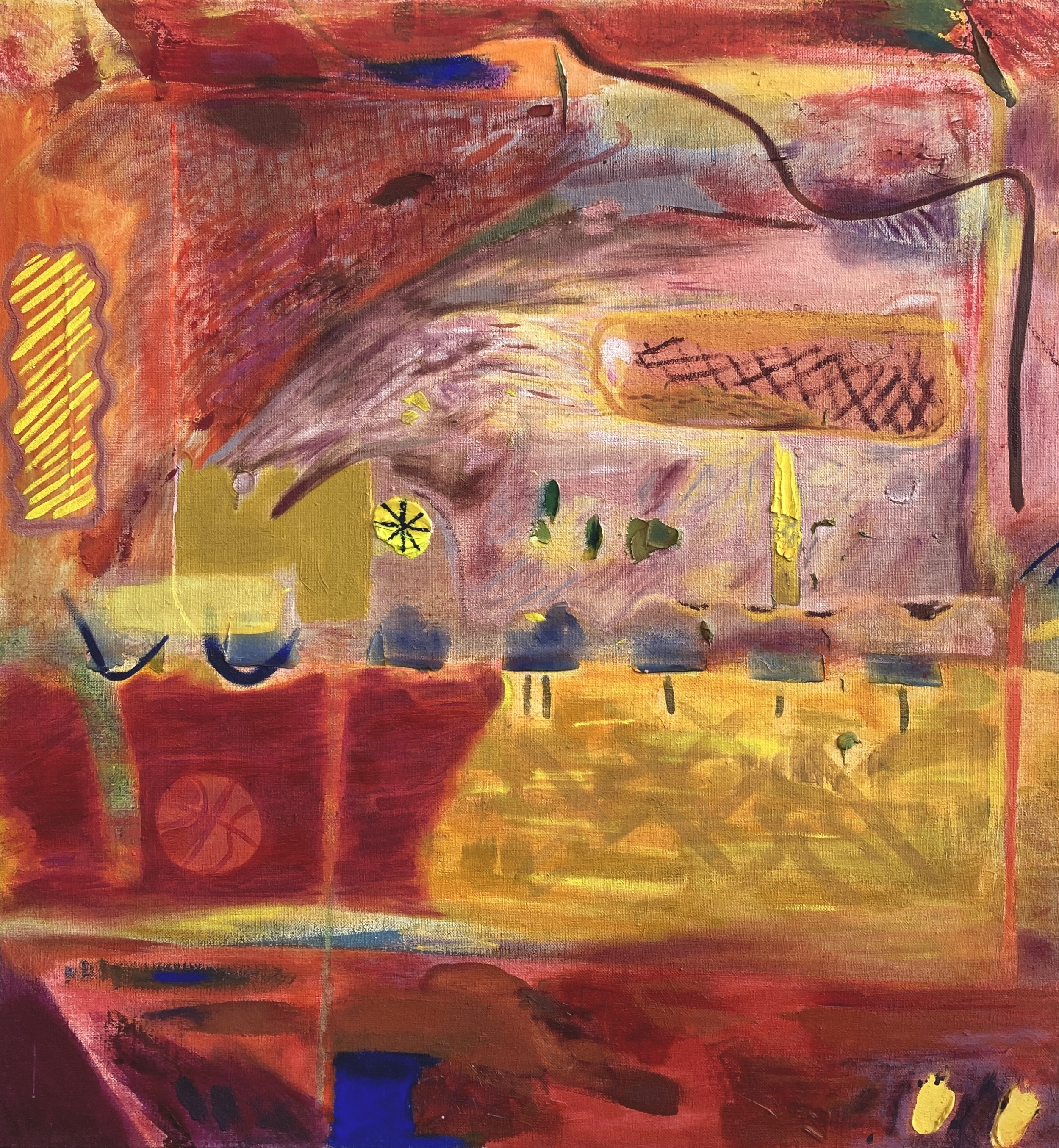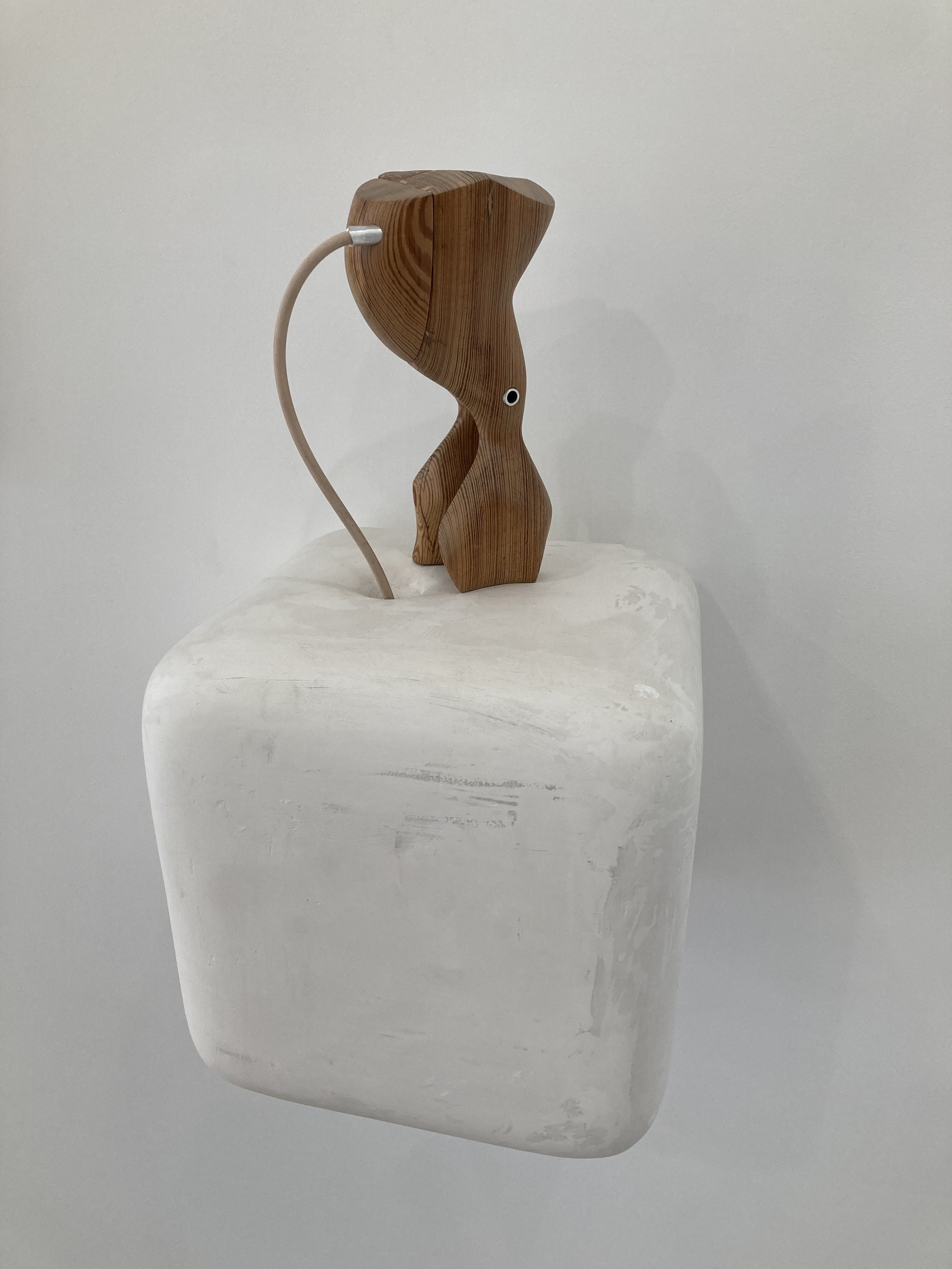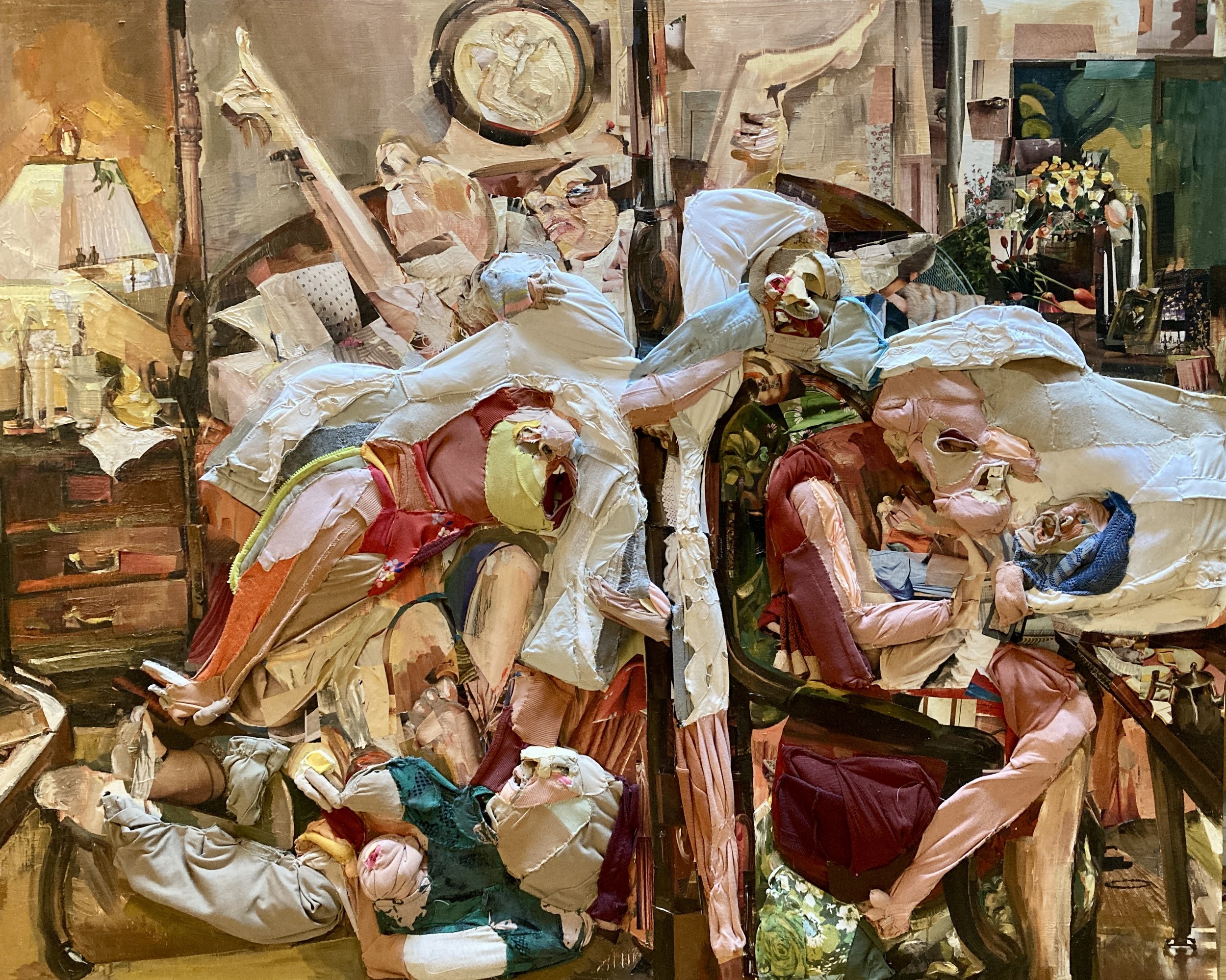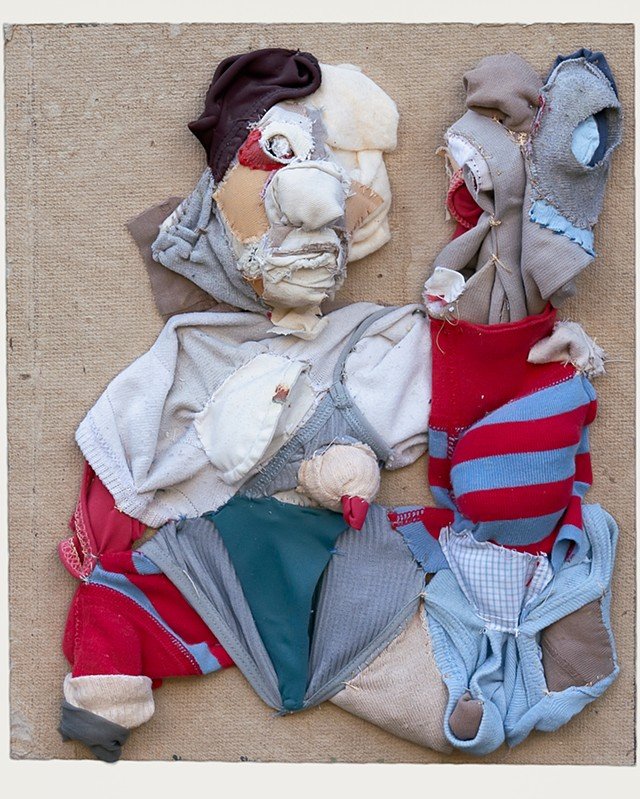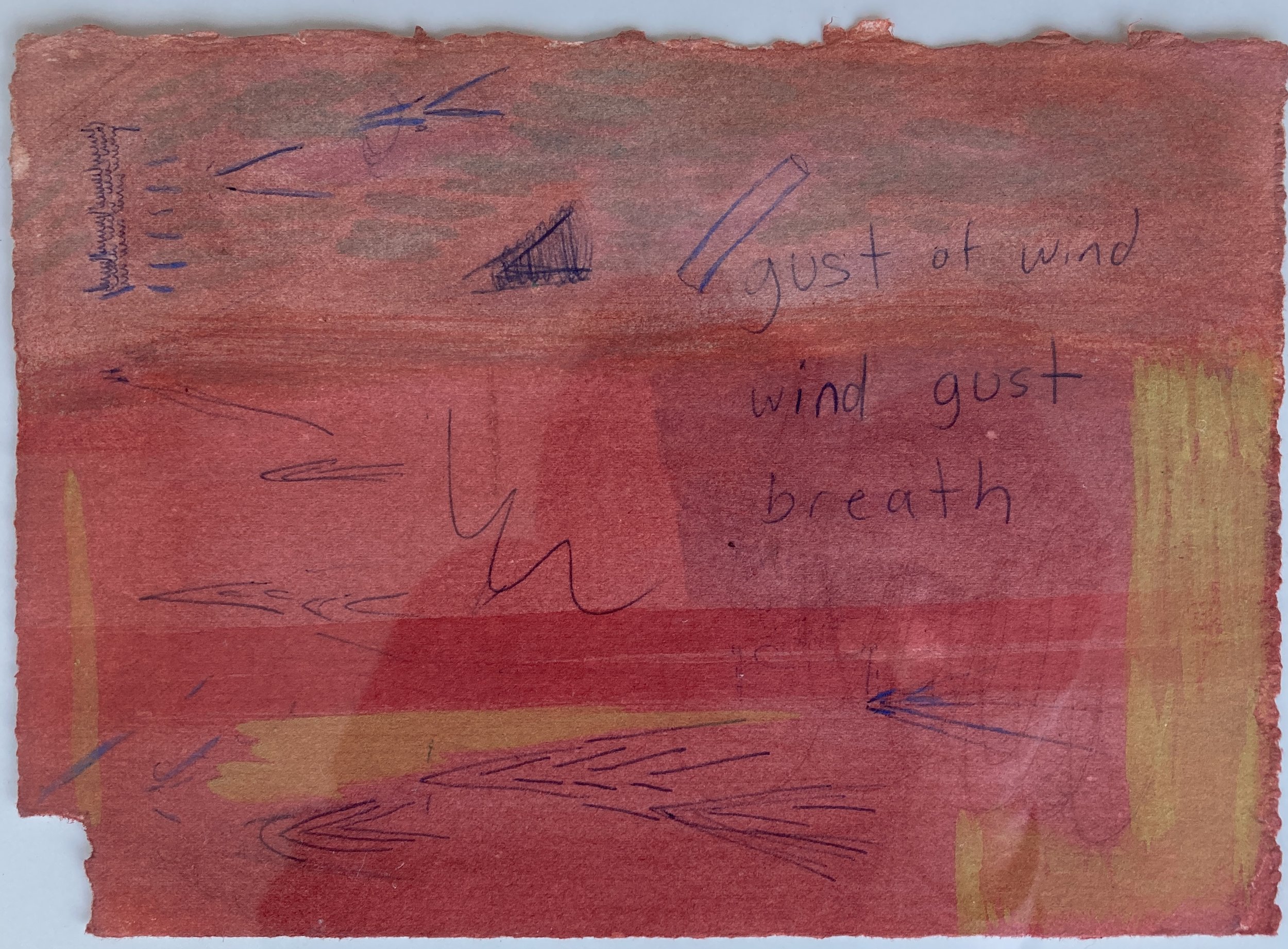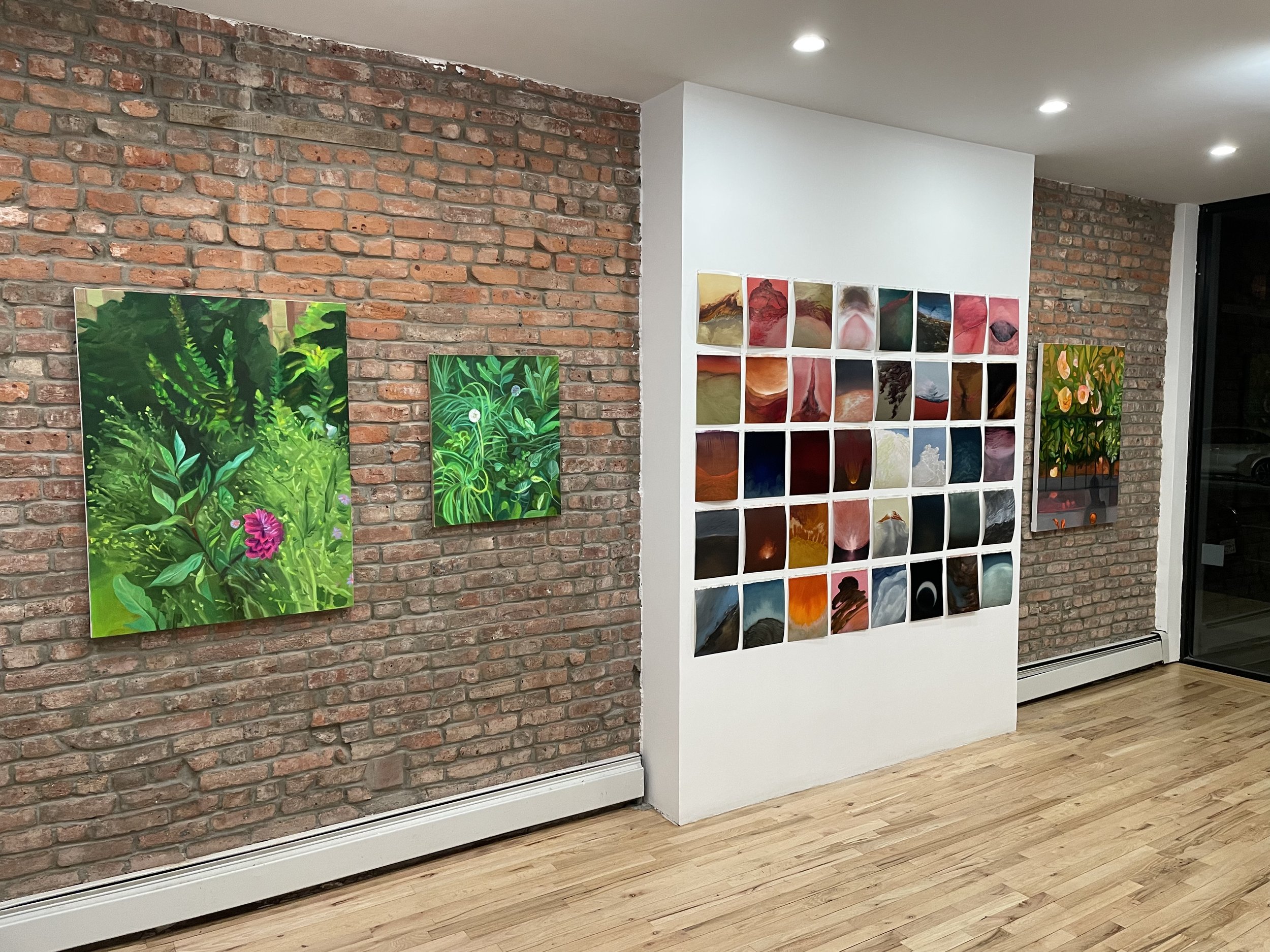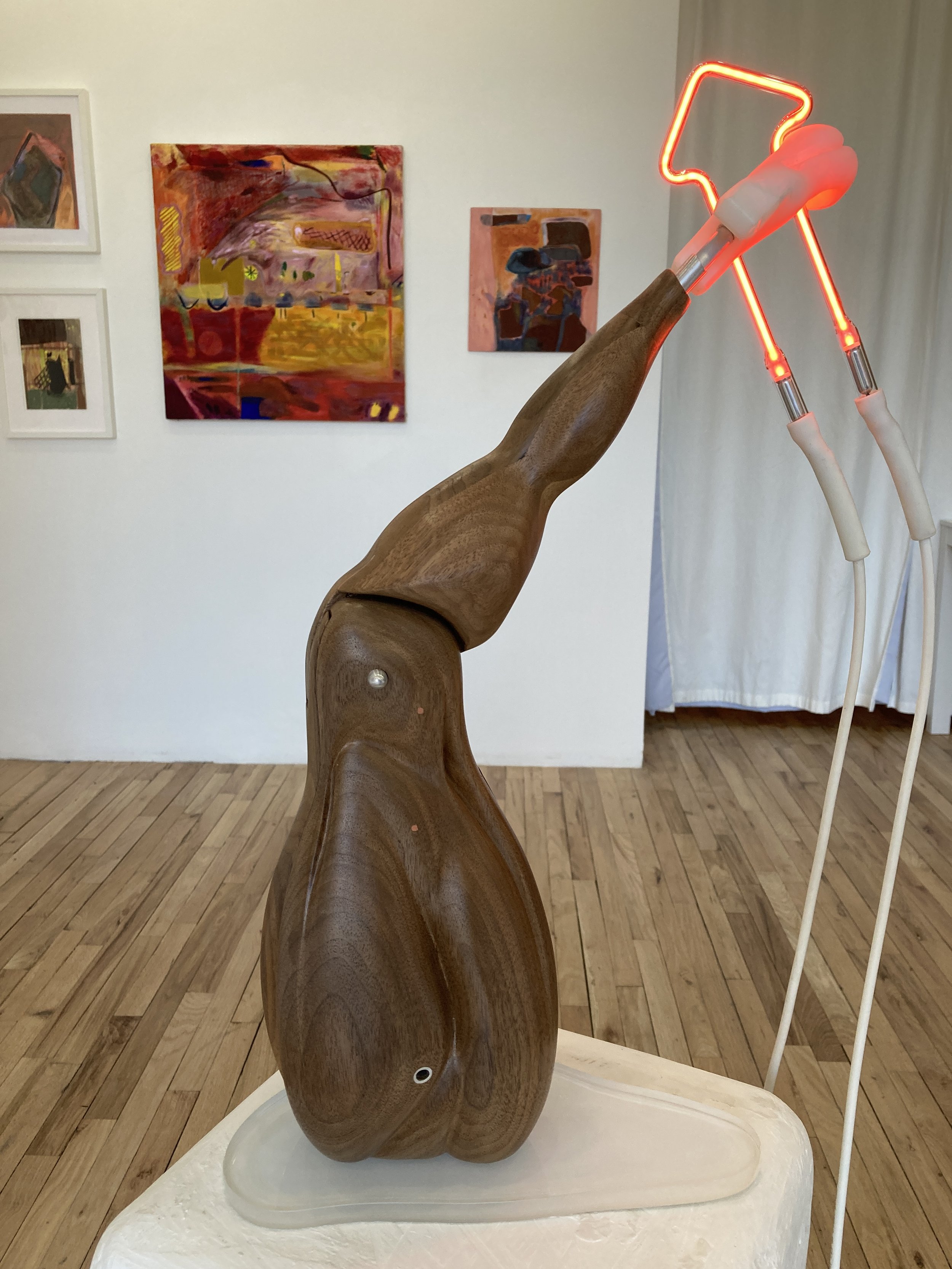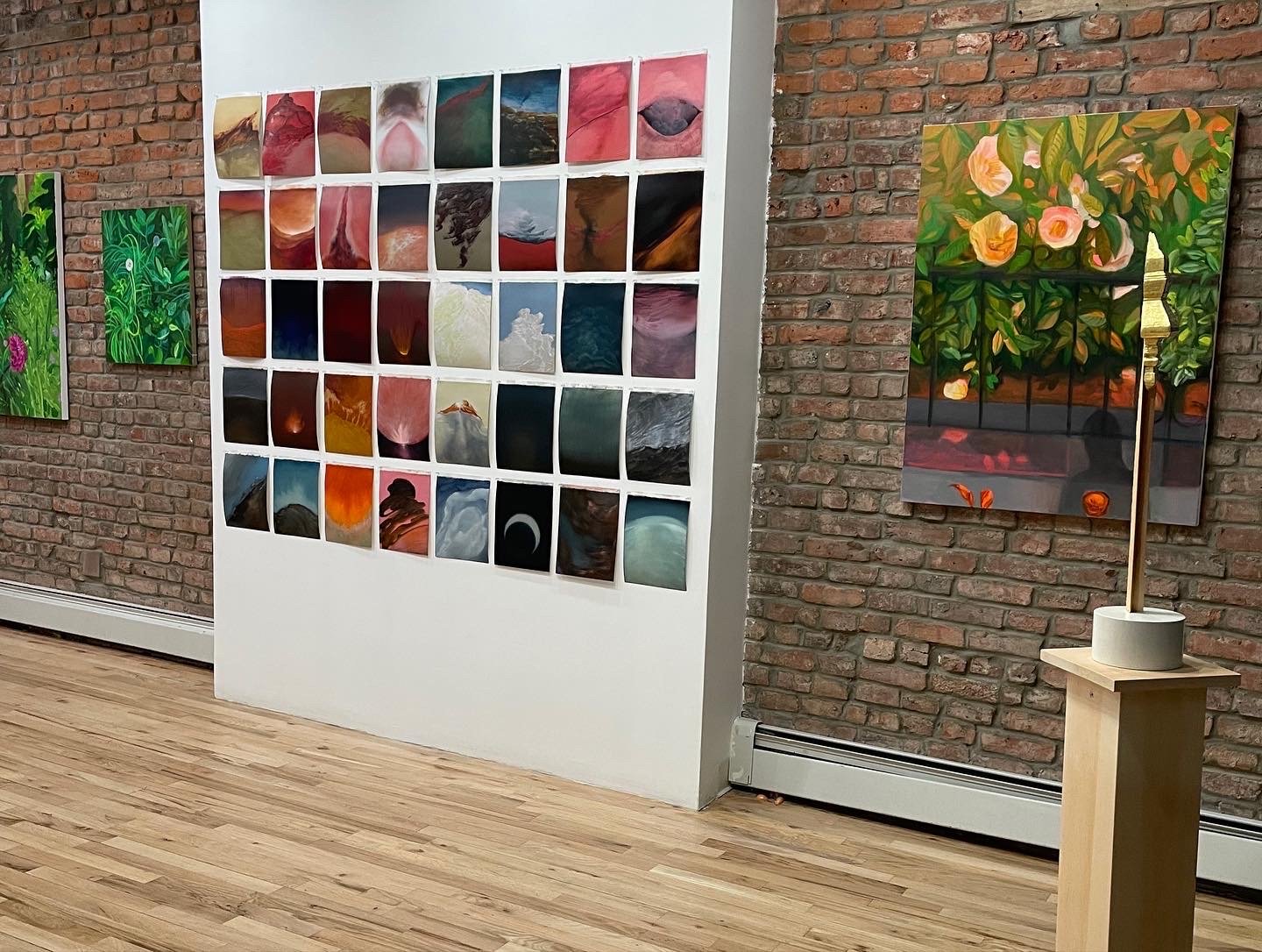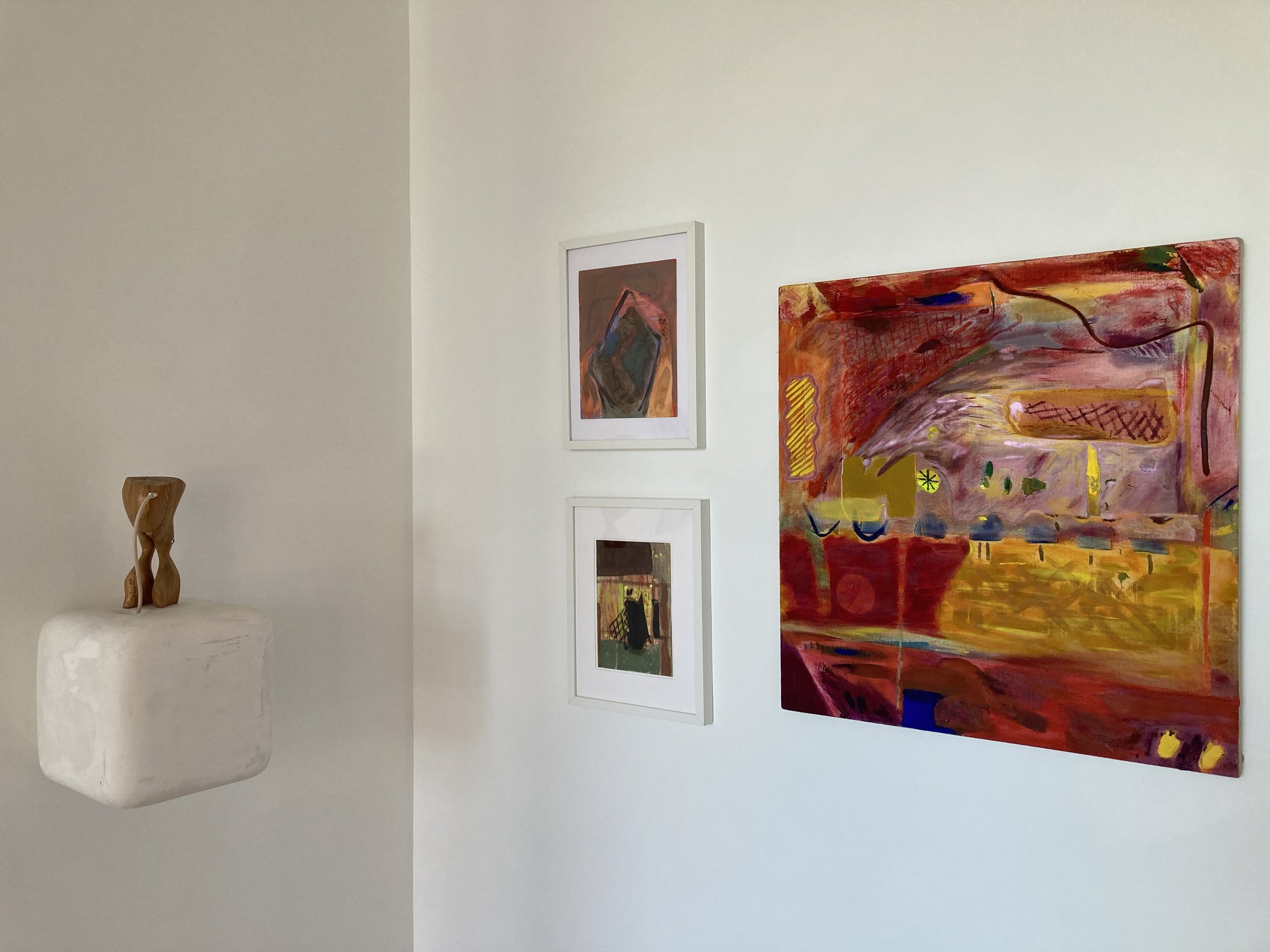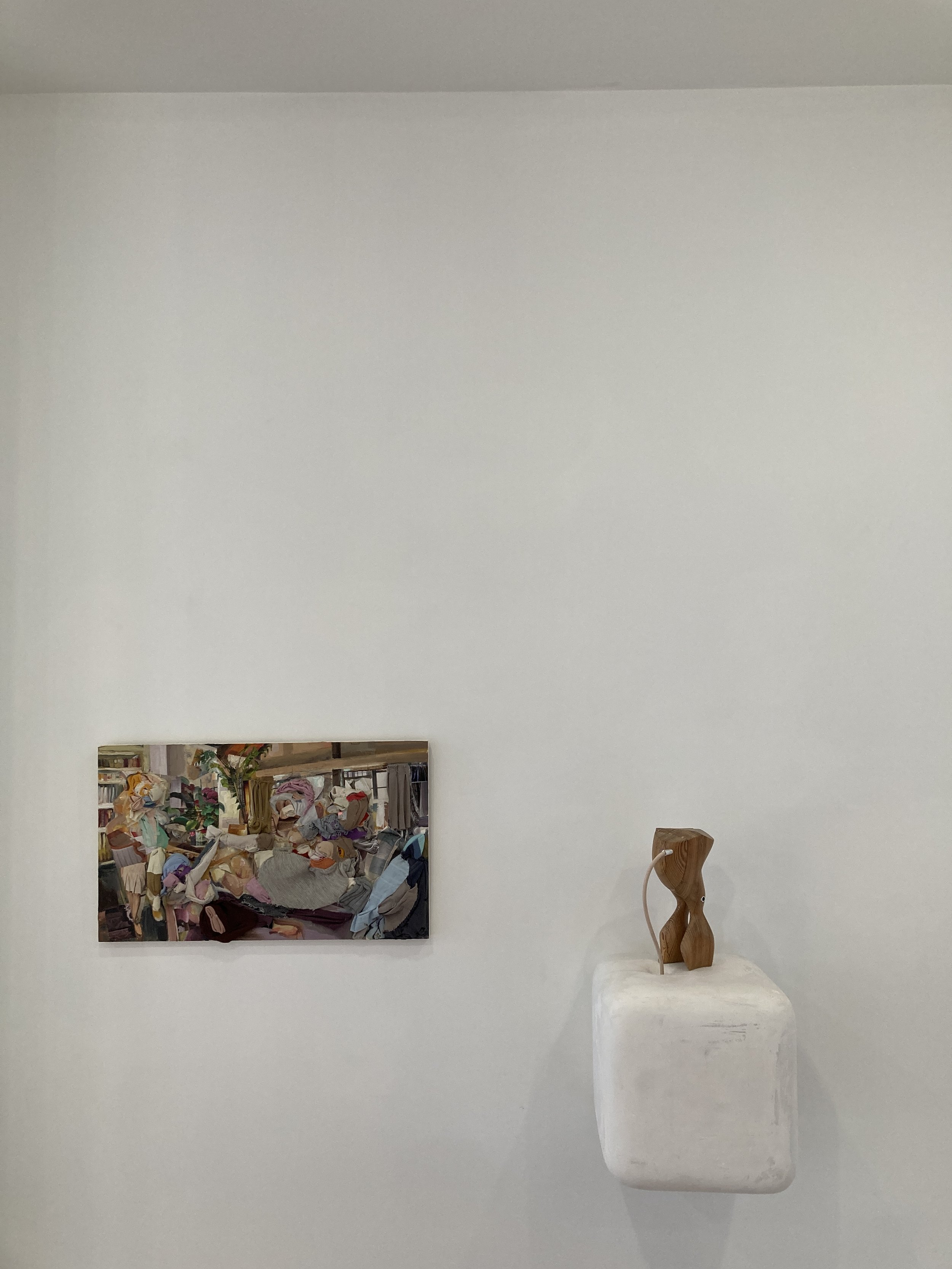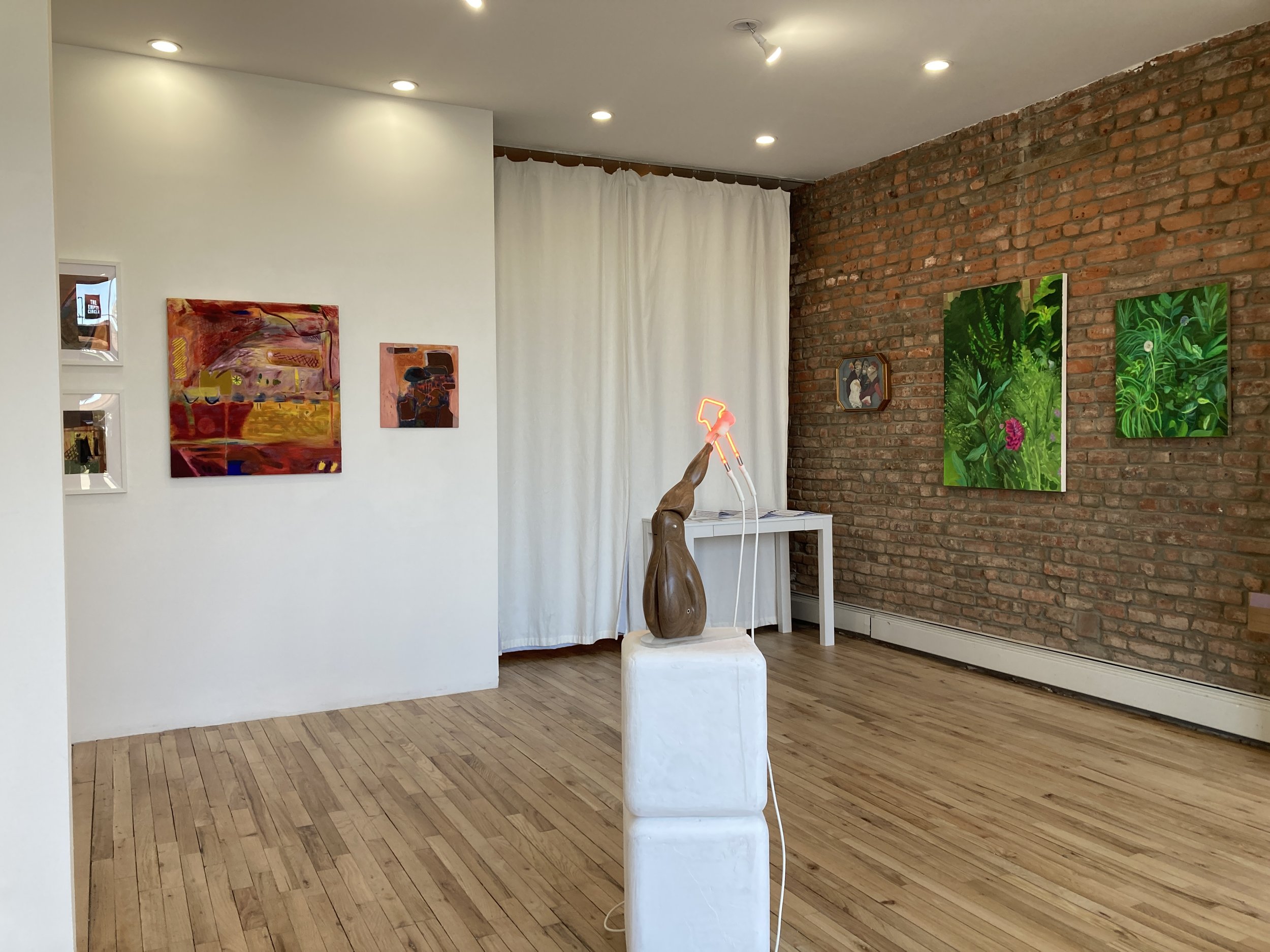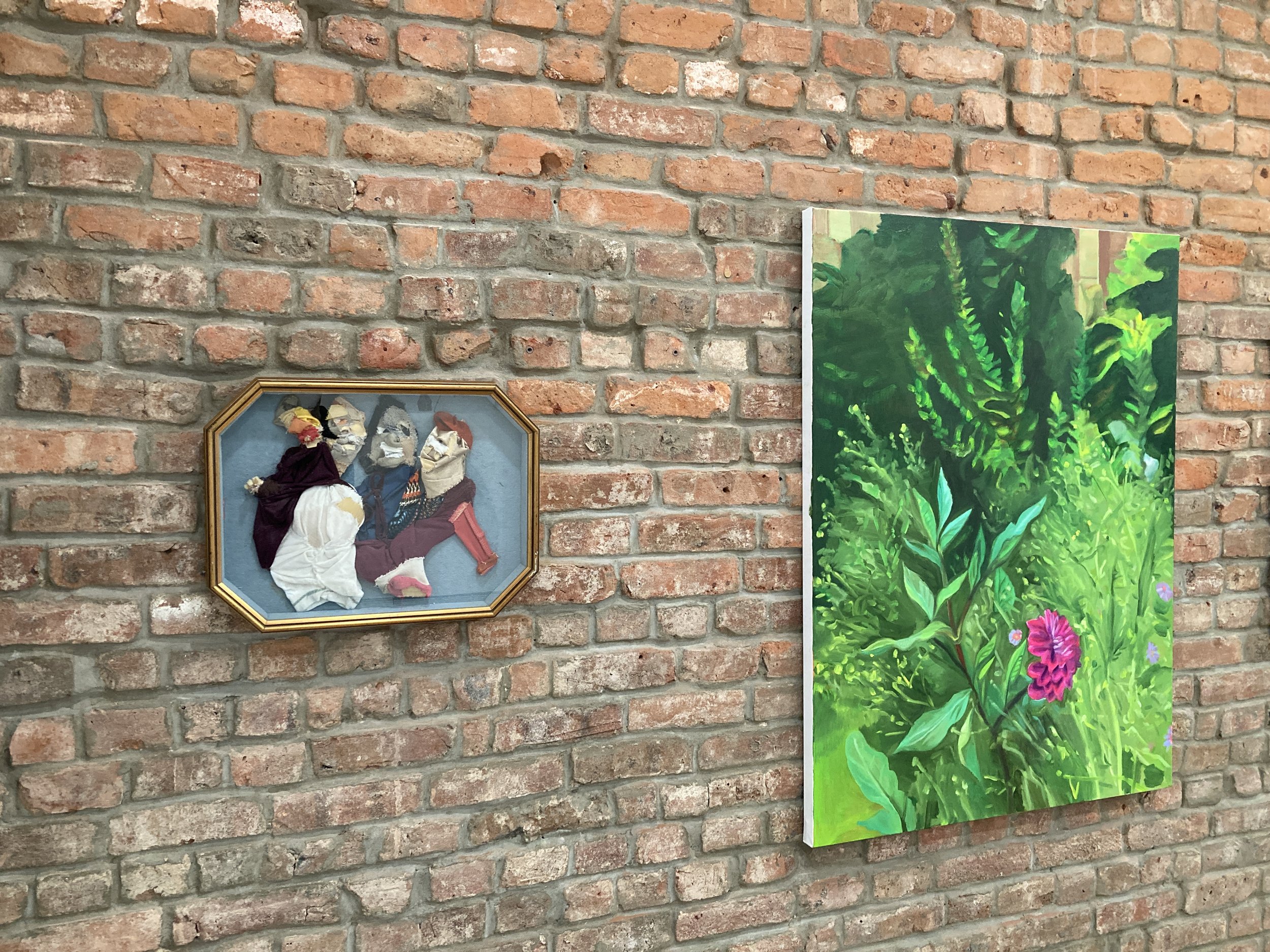Intimate Immensity
December 14 2022- January 7 2023
Opening Reception
December 16, 6 - 8 pm
Curated by Emily Church
featuring
Sarah Anderson
Roger Danilo Carmona
Emily Church
Peter Mallo
Halley Zien
“Immensity is within ourselves. It is attached to a sort of expansion of being that life curbs and caution arrests, but which starts again when we are alone.”
—Gaston Bachelard from The Poetics of Space
In his book The Poetics of Space, Gaston Bachelard, the mid-century French philosopher, explores intimate places such as that of a shell, a nest, the corner of a room, or a drawer, a garden, a forest, and the childhood home. He uses poetry as an entry point to show how artists contemplate exterior physical space in order to delve deeply into the infinite space of the interior. What is art at its core, but an exploration of the mind who creates; a manifestation of the unique way of seeing and experiencing the world? This space of the interior is truly infinite and can take any form that the artist conceives. That world of the inner daydream is often hard to articulate exactly to others—it is always at best a translation—but it is through well executed art that one interior life may in turn resonate with another.
The participants in this exhibition, Intimate Immensity—the title is taken from a chapter of Bachelard’s book—use their art as a form of language to articulate their unique experience of life, be that the a life of a parent, a child, a partner, a neighbor, a voyeur, a citizen, an artist. Through the use of various mediums and disparate techniques, these artists translate the intimate corners of the mind into work that expands outwards, towards the space of immensity, to speak to a more universal human experience. We find a deeper connection to ourselves and others when art allows us to say “yes, I have experienced light and color in that emotional way, and yes, those ordinary objects have transformed into poetry, and yes, a room can be an entire world, and yes, my surrounding environment can become enmeshed in my existence.”
For the five artists in the exhibition Intimate Immensity, the final art product is not the whole story, but rather the end point in a journey through material exploration and process-driven obsession. Roger Carmona, Peter Mallo, and Emily Church invest serious time in sourcing pigments, binders, and surface substrates when building paintings. Halley Zien and Sarah Anderson utilize found materials, objects with former lives, or deconstruct old work to make paintings and sculptures. All of the artists to some extent use found substrates upon which the art reacts. In this twenty-first century, post-postmodern, post-internet, digital age, the exploration of materials, process, and techniques both ancient and contemporary allows these artists to build work both formally rigorous and conceptually well-conceived, and that is aware of historical precedent.
Sarah Anderson has made art using such diverse materials as glass, ceramics, encaustic, neon, carved wood, aluminum, plaster and fresco. Her work sometimes contains elements of her older pieces, which she cannibalizes in order to find new meaning while referencing her past. The city becomes a source for Anderson’s art as she rides her bicycle between her day job as an art handler in major museums in Manhattan to her studio in Brooklyn, where industrial neighborhoods supply materials in the form of discarded garbage. Anderson incorporates these found materials into her final mixed-media sculptures. Taking the materials out of their original context of fabrication and altering them through process driven attention to craft and the language of material, Anderson tells stories about the resistance and oppression of desiring bodies in their encounter with the often hostile world around them.
Roger Danilo Carmona’s extensive knowledge of art making materials, and his access to high quality rare pigments, binders and paint-making materials (he is the general manager of Kremer Pigmente in New York) has allowed for his in-depth exploration of light, translucency, opacity, language, and structure in his works on paper and canvas built with entirely hand-made paint. Carmona injects rich meaning and story telling through abstracted imagery, which pulls from his childhood in Miami, Florida and Nicaragua, to his present life traveling through various neighborhoods of the city from his day job in Manhattan, to his studio in Bushwick, to his home near Prospect Park in Brooklyn. Carmona’s encounters with urbanity, with fellow artists, art, and history both personal and national, make their way into his lush and carefully crafted work.
Emily Church’s history with the materiality of art making extends back to her childhood in Kentucky learning to paint from her architect father with watercolors, to her undergraduate years in St. Louis majoring in sculpture and printmaking, then later still as an art handler in New York. When Church finally settled into painting, the process of making her own paint and gesso, and building her substrates became integral to her process. Church often works on found stretchers as well as paints over older work. The found and repurposed substrates dictate the beginning size constraints for her paintings and drawings, which are then expanded upon in further pieces. She utilizes her knowledge of pigments as vehicles for light as she makes semi-landscape paintings based on her experience of nature as it collides with the man-made world. Her source of inspiration is found on daily walks through the city.
The sculptures, drawings, and paintings of Peter Mallo are deeply researched works that reference art historical materials. His sculptural influences include Italian wood carvers, ancient masters of Japanese joinery, and his father who was a carpenter. For seventeen years, Mallo was the primary frame-maker for the Guggenheim museum in New York, and his interest in craft and material carries through in his work. The series of paintings in this show emerged as unscripted, experimental sketches; a departure from his longer term projects. Mallo responds in hand-made paint to the native color and slick, almost plastic-like qualities of the substrate—a box of found 8x10” paint chip samples by the now defunct company, YOLO. Mallo’s knowledge of surface treatments and materials allows for a richness in depth and transparency in these abstracted interior landscape-like fields.
As a young person growing up in Manhattan with artist parents, Halley Zien spent time as a pianist, actor, writer, dancer and visual artist. These varied personas come together in an explosion of visual stimulation in her complicated three-dimensional paintings on panel. Zien finds inspirations for her invented interior spaces from old Architectural Digests and other magazines dating back to the 1980s when Zien was a child. The paintings include collaged elements from the magazines and an orgy of abstracted human figures, taking their cues from mask-making, which are created using scraps of material from cast-off clothing from Zien’s own life, which she painstakingly pins and hand-sews into the paintings. The material becomes almost diaristic, enclosing her life as a mother, partner and artist into the fabric of the finished work in an exploration of what is private and what is performance.
For each of these Brooklyn-based artists, the urban landscape of New York becomes a major source of inspiration both physical and metaphorical. The city regurgitates objects, imagery, and art making materials that these artists incorporate into their process. In many ways, it is through living in New York, maintaining day jobs that are part of the industry of the art world, drawing on the energy of urban life, and sourcing found and recycled materials for use in their work, these five can truly say their work is a product of the times in which they live.
